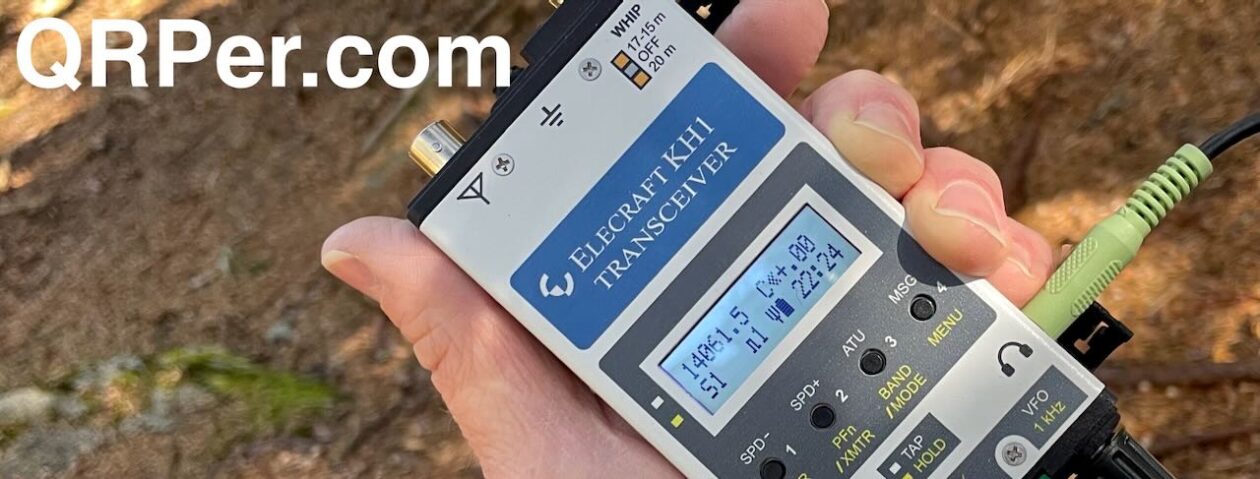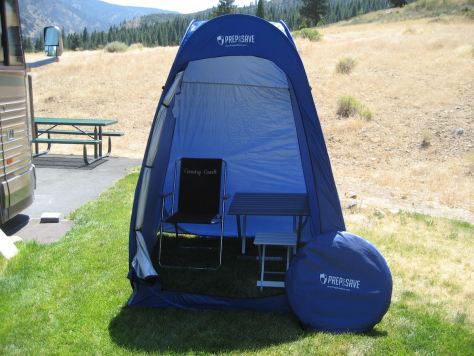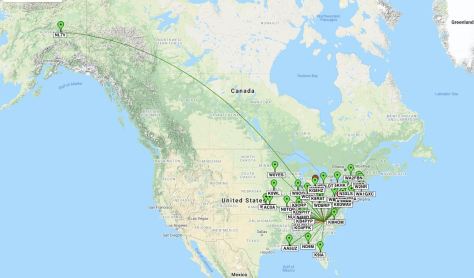 I mentioned in a previous post that I recently did a thorough clean-out of my shack and home office. It took two full days, and kept me out of the field during that time, but I’m very pleased with the results.
I mentioned in a previous post that I recently did a thorough clean-out of my shack and home office. It took two full days, and kept me out of the field during that time, but I’m very pleased with the results.
After re-arranging my grab-and-go QRP rigs on their dedicated shelf, one rig was very conspicuous: my LnR Precision LD-11.
Thinking back, it has been ages since I used it in the field–possibly more than a couple of years, in fact. As I packed my bags Sunday morning for a multi-day trip to my hometown, I grabbed the little red LD-11 and stuffed it in my main radio bag. It was time to take it to the field!
Lake James State Park (K-2739)
I didn’t have a lot of time to play radio Sunday afternoon, so Lake Jame State Park was a no-brainer. There, I know I have a number of picnic table options, mobile phone service, and it’s a modest detour off of Interstate 40. Low-hanging fruit in my POTA world.
There was snow on the ground Sunday afternoon, but it was 36F/2C so not terribly cold, just damp.
Due to snow melting in the trees, I set up my station in a picnic shelter where things were dry.
Gear:
- LnR Precision LD-11
- Elecraft T1 ATU
- Par EndFedz EFT Trail-Friendly 40/20/10 meter antenna
- CW Morse “Pocket Paddle”
- Red Oxx C-Ruck
- Bioenno 3 aH LiFePo Battery (Model BLF-1203AB)
- Ham Radio Workbench DC Distribution Panel
- Arborist throw line
- Tom Bihn Large Travel Tray
Although I’d used the LD-11 recently at home to chase a few SOTA and POTA stations, I had not operated it intensively so it took a little time to reacquaint myself with this little rig.
It’s a gem of a transceiver and has a lot to offer in the field. If you’re interested to learn more about it, I’d encourage you to check out my original review of the LD-11 over at the SWLing Post.
Like the FT-817ND and G90, the LD-11 has no memory keying in CW or Phone. Memory keying is such a useful feature for park and summit activations because it frees up your fist and voice while calling CQ or sending 73s. With the LD-11, I’d be doing all of this “old school” which is absolutely fine for a short activation.
On the air
Although my EFT Trail-Friendly antenna should be resonant on 40, 20, and 10 meters, it was not Sunday because I’m almost certain I’ve finally damaged the radiator coil. I’ve deployed this antenna well over 150 times and yanked it out of countless trees when it got stuck. It’s lasted much longer than I would have ever guessed.
When I tried transmitting on 40 meters, I got a high SWR. Instead of replacing the antenna with another one, I simply hooked up the Elecraft T1 ATU and found a match. This is one good reason why you should always pack an antenna tuner. While employing an ATU might not be as efficient as using a resonant antenna, it can save your bacon in a situation like this and will certainly get the job done (especially if your only goal is a valid field activation).
After matching the antenna, I hopped on the 40M band and logged five CW stations in short order. Obviously, the antenna was working “well enough”–!
As I’ve done with a number of my recent activations, I started recording a video at this point. I started it after my first five CW contacts due to a lack of space to record a 60 minute video (this one turned out to be 40 minutes and change).
I then moved up to the 20 meter band where I worked one CW station, then switched modes to SSB where I was surprised to work Jon (TI5JON) in Costa Rica, Steve (WA4TQS) in Texas, and Paul (NL7V) in North Pole, Alaska.
Video
This was one of those rare instances where my QRP SSB signal snagged more distant stations than my QRP CW signal.
I’m certain, however, had I spent more time on 20M CW, I would have logged a number of other distant contacts. Here’s my QSOmap from the activation–not bad for 5 watts into an inefficient antenna:

All-in-all, I was very pleased with the activation. Even though I was making do with a faulty antenna and even though my CW was a little sloppy since I wasn’t quite used to the LD-11 keyer timing, it was so much fun!
I do love the little LD-11 and would certainly recommend grabbing a used one if you find a good deal.
As I mention in the video, the LD-11 is no longer manufactured and it never will be again. The main engineer behind the LD-11, SKY-SDR, and ALT-512–Dobri Hristov (LZ2TU)–passed away in 2020. Dobri was a well-respected fellow and distinguished ham radio operator/DXer. I corresponded with him quite a few times in the past. Sadly, when Dobri passed away, he took the design of all of these rigs with him. His brief period of sickness leading to his death all happened within a year.
So if you find one of these fine transceivers, keep in mind that some internal components (LCD screens, ICs, etc.) might be hard to replace if they fail. These radios are built well, however, so I wouldn’t expect something like that to happen for a very long time.
It was a lot of fun using the LD-11 during this activation and I certainly plan to put it in rotation from now on. Wherever Dobri is now, I like to think he’ll feel those LD-11 signals running through the ether!
Any other LD-11, SKY-SDR, or ALT-512 owners out there? Please comment!




























































